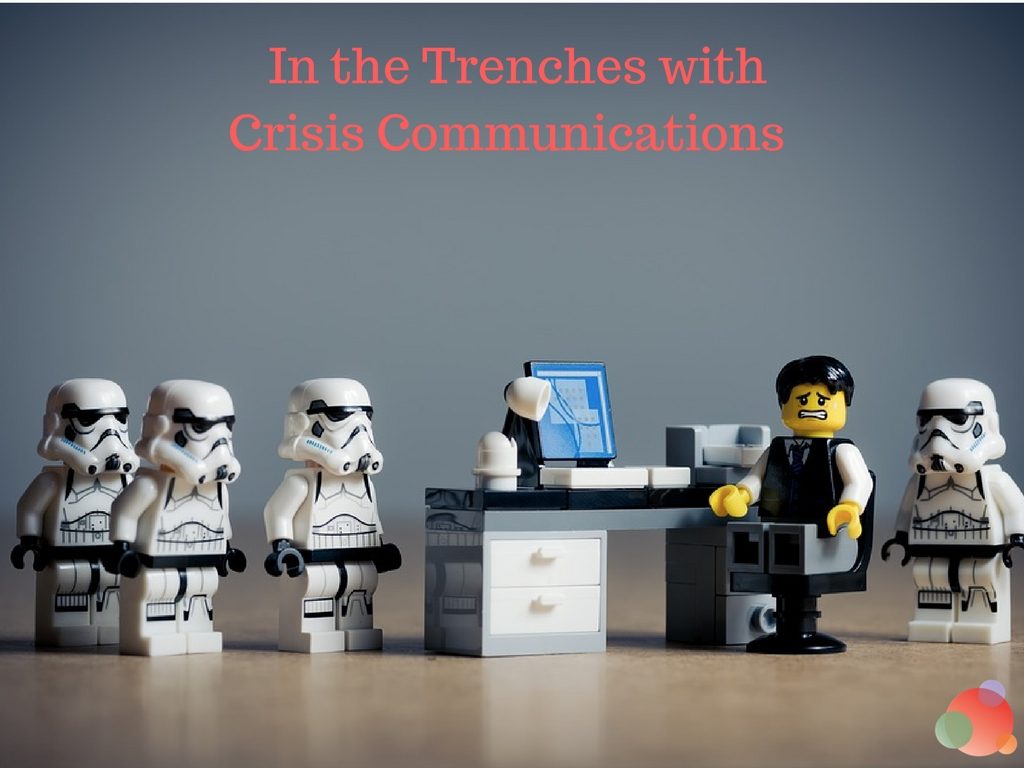 Later today, I am giving my crisis communications speech at Social Media Marketing World.
Later today, I am giving my crisis communications speech at Social Media Marketing World.
I’m doing an “in the trenches” look at case studies, from the perspective of the communicators who handled them.
Rather than armchair quarterback the situations, I thought I’d go straight to the sources themselves.
And they did not disappoint.
Leading up to this speech, I’ve been highlighting some of the case studies I’ll share (and will continue to do so through March).
To this point, we’ve talked about Crock-Pot and how a university student exposed five people to HIV and HepC.
Today, I have the pleasure of showcasing a case study from Sandy Hook—from the perspective of a father whose child was murdered…and the communicator he worked with to set the record straight.
The Sandy Hook Conspiracy Theorists
As you well know, the trolls online are alive and well.
And there are professors at universities who teach conspiracy theory and use current events as part of their curriculum.
Before talking with Andrew Blum, the principal at AJB Communications, I had no idea this was a thing.
But at Florida Atlantic University, James Tracy taught a class on conspiracy theories and floated the idea that the shooting did not occur.
(He claimed it was a FEMA drill to promote gun control.)
An AJB Comms client was the father of one of the children killed and was the subject of Tracy and other conspiracy theorists.
These people claimed Sandy Hook never happened, questioned whether his son was dead, and doubted the client and his wife were the child’s parents.
The client also received death threats.
It’s not enough to lose your kindergartner, but then you have to deal with that?
My heart cannot take it.
Choosing the PR Battles to Fight
Shortly after Sandy Hook, the conspiracy theories began to bubble up and spread—and Andrew’s client saw an increase in death threats.
He wanted to find a way to address the comments in the media. He needed help picking and choosing which PR battles to fight.
Getting help from a crisis communications professional resulted in corrections in stories and helping reporters understand they had left things out or missed nuances in stories.
Andrew said:
As I worked with this client, I brainstormed some ways I could get the client’s message out. But he wanted to focus mostly on the conspiracy aspect and less on saying something in the media when other mass shootings took place in 2014 and 2015.
Because our society tends to highlight anniversaries of events, the PR angle I had been looking for presented itself in the form of the third anniversary of the massacre.
Focusing on my client’s son, we decided I would pitch an OpEd timed to the anniversary—and use it to attack Tracy.
By this time, his client had moved from Newtown, Conn., to South Florida.
Andrew targeted the three largest newspapers in South Florida—the Sun-Sentinel, Miami Herald, and Palm Beach Post.
The Sun-Sentinel accepted it and published it quickly, sparking reactions from Tracy and Florida Atlantic University.
The coverage was fueled by a response from the professor on his blog when the school announced he was facing discipline.
Some of the evidence used in firing the tenured professor was provided by Andrew and his client.
In This Case, the 24/7 Newscycle was a Blessing
The good news is, this was a story that Andrew and his client wanted to live on forever.
And it did.
The original OpEd in the Sun-Sentinel created further editorials and stories in hundreds of outlets, including all of the major newspapers and NPR.
Every time there was a reaction to the story, more media outlets contacted Andrew and his client.
It not only resulted in the firing of the tenured professor, but in the client’s non-profit receiving massive publicity, raising its profile for fundraising.
I love this story that is on the flip side of the coin. So often we want the media to die down as quickly as possible and consider it a job well done if it’s only one 24/7 newscycle.
In this case, Andrew’s client is now a sought-after expert on the family side of mass shootings.
(Which, in and of itself is awful because we even need an expert for that, but that’s a different discussion for another time.)
When I asked Andrew what he learned most from the experience, he said:
Remember that when you deal with individuals in a crisis, they may not be as experienced with media as other clients. You may need to act partially as a psychologist and also do quick intensive media training.
Ten Tips for Crisis Communications
The last thing I asked Andrew was what he learned that he could give to other communicators.
He put together a top 10 list for you:
- Keep the message simple; change as needed to keep up with developments.
- Use the web and all social media channels wisely.
- Have one designated spokesperson with one consistent message.
- Hire a crisis communications agency.
- Keep up with the client’s use of email and social media. Keep it to a minimum.
- If your client is flogged in the media, choose the right time and angle to comment or hold a news conference. Media train the client.
- If you promise journalists something, deliver. They never forget.
- The local media takes big stories personally so don’t forget them even as a crisis goes national.
- Try to avoid no comment.
- Remember, a family or individual may have had no media dealings before a crisis. Keep that in mind and realize you may also need to play psychologist.
And now I leave the comments to you.